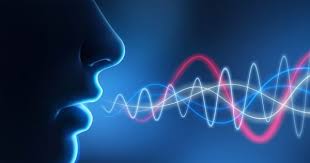What is the Difference Between Transcription and Speech Recognition?
A lot of times we are asked to explain the difference between “transcription” and “speech recognition” – what is the difference? Transcription can be performed by a machine or written by a human. Transcription converts recorded speech into written format. Speech recognition uses input spoken directly into a system to trigger an action.
How Transcription Works
Transcription compares patterns in a long string of sounds. It works best when it takes cues from multiple words to find the correct phrase or sentence. In other words, it takes sounds from the beginning, middle, and end of a snippet. If sound “a” is in one place and sound “b” is in another, transcription assumes that sound “c” is a particular word. It takes multiple passes and uses guesses about various components to transcribe a voice recorded passage. Machine transcription is more likely to make mistakes when translating the audio because it doesn’t pick up the context as well and doesn’t understand slang. Whereas, human transcription will give you a more concise translation due to the human ear and the technology used to transcribe an audio recording.
Transcription Problems
Transcription does not work well with single words that lack context. For example, the words “blew” and “blue” sound alike. The transcriber needs to hear a sentence or phrase such as “the wind blew” or “the color blue” to know the correct word. Machine-based transcription makes multiple passes to compare components from the audio to make guesses about other components.
Several factors can affect the length of time it takes to transcribe an audio recording:
- Speed at which people are talking
- Number of people talking
- Clarity of recording (presence or lack of background noise)
- Clarity of speaking voices (accents, mumbling, speaking over each other)
Types of Transcription
Transcription can also be performed by a human being who listens to the audio and types it out. A client must choose between human or machine-based transcription, as well as the type of transcription, including
- Verbatim transcription, which is an exact replica of the audio or video. It transcribes and time stamps every word, emotion, background noise, and mumbled or garbled speech. This is the most difficult and time-consuming type. It is often used in legal proceedings, movies, and videos.
- Edited transcription, in which the transcriber omits parts of the recording while retaining its original meaning. It can be time-consuming because the transcriber must know what is and is not important. This type is often used for conferences, seminars, and speeches.
- Intelligent transcription, which omits emotions and garbled or mumbled language. It produces straightforward and clear results, but is difficult and usually costly due to the need to understand the intended meaning of the speaker.
How Speech Recognition Works
Speech recognition uses algorithms to match sounds with a grammar or predefined list of words. Unlike transcription, it does not attempt to find the meaning of the audio as a whole. It only attempts to match sounds with the list of choices, which tells the system what it should expect to hear.
Like transcription, speech recognition performs better with a group of words than with a single word. Algorithms based on acoustic modeling and language modeling are the keys to speech recognition. Acoustic modeling compares linguistic units with audio signals. Language modeling matches sounds with word sequences to distinguish between similar-sounding words.
Best Uses for Speech Recognition
Speech recognition works best at tasks that involve predictable language, such as
- Device control, such as saying “OK, Google” or “Hey, Siri” into a smartphone and then speaking commands.
- Car Bluetooth systems that connect a smartphone with the radio so that a user can make or accept calls without touching the phone.
- Voicemail that has predictable word sequences, such as “call me back.”
Speech Recognition Problems
Speech recognition does not work well with long, unpredictable tasks such as reading a few paragraphs from a novel. The result will likely be completely different from the original text, as the system tries to match sounds with the grammar. Garbled speech, accents, and background noise will cause errors within the text or even system failure.
Conclusion
Transcription and speech recognition have their advantages and disadvantages. The type of speech and the task at hand will determine which system is the best choice. Whether it be sending a text message through voice or interviewing someone, having tools like transcription and speech recognition are there to help you.
References:
https://www.lifewire.com/what-is-speech-recognition-3426721
https://www.speechpad.com/blog/types-of-transcription
https://www.tropo.com/docs/voice/transcription-vs-speech-recognition-asr

